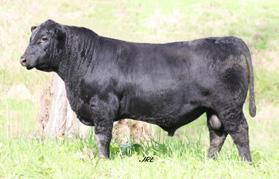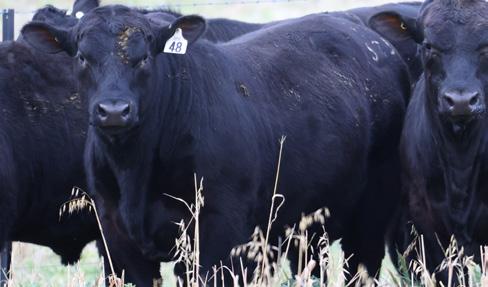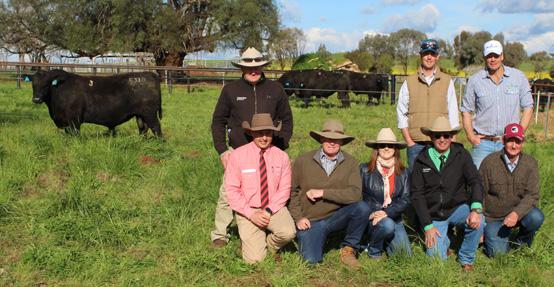
2 minute read
Record Breaking bull sales


A B C

Record Breaking bull sales
Diana Wood, Marketing & Communications Manager
With the stars aligning across the beef industry and Angus bull sale after bull sale hitting record stud averages and highs, 2022 has been another year for records to be shattered, with Millah Murrah Angus, hitting a new record average of $43,632 for a full clearance of 28 bulls sold for a $5.585 million gross.
This result considered a new all breeds world-wide record average is 28% above the 2021 average achieved by Millah Murrah when 118 Angus bulls were sold for a then world record average of $34,221. The top price on the day was $160,00 paid for Millah Murrah Sugar Ray S76, by Ascot Angus, Warwick Qld and JT Angus, Scone NSW. Another three bulls also reached six figures with, $110,000 paid for Millah Murrah Stormtrooper S235 purchased by Heart Angus, Tamworth NSW and Palgrove, Dalveen Qld; $100,000 for Millah Murrah Stormtrooper S52, purchased by Bassett Cattle Company, Roma, Qld and $100,00 for Millah Murrah Sugar Ray S273, purchased by David McLeod NT. Millah Murrah principal Ross Thompson said that ‘The rural economy is incredibly strong. We have not seen anything like this before.’ ‘This is a very special moment for our family and the team of people who help us. These will be times we look back on in decades ahead with the same nostalgia as our forebears reflected on the 1950’s wool boom. But I think what we have seen over the past three years in livestock surpasses even that.’ Mr Thompson believes that results like this reflect the changing terms of trade for agriculture, as commercial cattle producers are now getting more for their steers and as such are willing to spend more on their bulls. ‘Cattle producers are cashed up generally as we approach the fourth year of stellar market conditions. The 10-steer rule equates to a decent commercial bull being worth $20$30,000. For those who want to target the top of the market, they are willing to fork out quite a bit more than that.’ While bulls sold to all states of Australia, support from Queensland increased, with Mr Thompson crediting ‘Angus fever’ in the north of the country for this, as many sales this year have experienced increased demand from this part of the country. ‘Northern producers are learning how to integrate Angus genetics into their systems. And it is worthwhile as they are receiving the Angus premium, increasing fertility rates, and improved maternal performance in their herds.’ Mr Thompson explained that it takes some common-sense management but survival rates and longevity of Angus bulls in the north is growing exponentially. With confidence in the beef industry, and in particular Angus genetics, at an all-time high, Mr Thompson believes the future for Angus producers will remain strong. ‘Increasing global demand for red meat protein is well documented and Australia is the one major beef producing country where all the stars are aligned. Most other countries are in herd decline, brought about unfortunately by drought. So, we are in the enviable position to capitalise.’
F G











